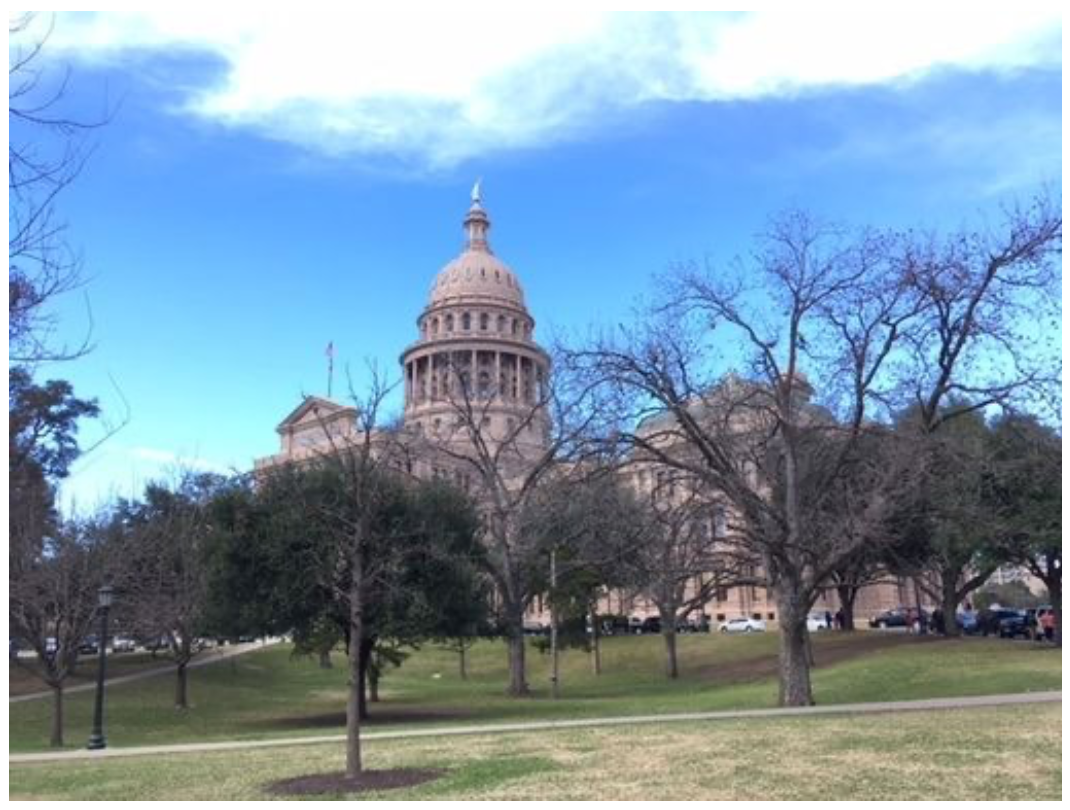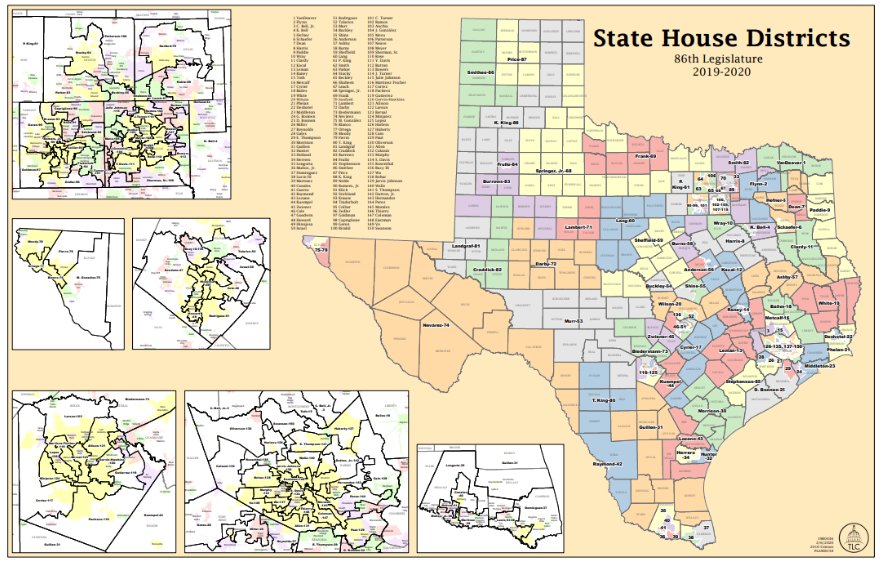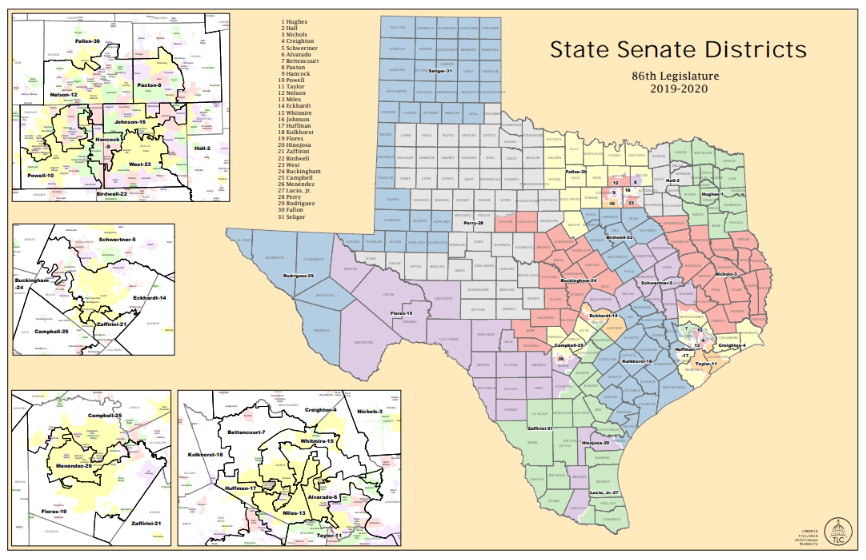7.1: Structure of the Texas Legislature
- Page ID
- 129165
Article 3 of the Texas Constitution establishes the legislative branch of the Texas government. Like the U.S. Congress, Texas’s state legislature comprises both a Senate and a House of Representatives (Figure 7.2). However, as the example of the back-to-school weekend shows, the Texas Constitutions puts different rules in place for the legislature, including a balanced budget rule, which prohibits spending that exceeds estimated revenue. The drafters of the Texas Constitution also believed in limiting governmental power as a means of protecting individual liberties. Therefore, the framers of the Texas Constitution purposely created a distinctive structure that makes the passage of legislation difficult.

Bicameral Structure
The Texas legislature has a bicameral (two chambers) system with a Senate and a House of Representatives, a structure modeled on the two chambers of the U.S. Congress. Together, they constitute the Texas legislature. Every U.S. state except Nebraska has a bicameral legislature. One of the advantages of a bicameral system is that it subjects the budget and any potential legislation to different points of view in that legislation must bass both the House and the Senate. The 150-member House is a large, raucous group of legislators who are constantly running for reelection. The thirty-one-member Senate, sometimes described as a “country club,” is a smaller group of legislators who know each other well, and who serve for longer terms of office. Additionally, the Texas Senate traditionally adopts rules requiring a supermajority of senators to vote—a fixed number greater than half—to bring proposed legislation up for debate, a measure designed to promote consensus and compromise but which also makes controversial legislation harder to pass.
Regular Sessions
Judge Gideon Tucker famously said in 1866, “No man’s life, liberty or property are safe while the legislature is in session.”3 The drafters of the Texas Constitution would agree with this sentiment. They were wary of government power and thus set limitations on when the state legislature can meet. The Texas legislature is restricted to biennial sessions, which means a regular session will be held only in odd-numbered years beginning on the second Tuesday in January, and for no more than 140 days.
The flow of legislation within this short time window is further restricted by a constitutional provision prohibiting bills from being considered on the floor of the House or Senate during the first sixty days of a regular session unless designated as emergency measures by the governor. For the 2021 session, Governor Abbott designated five emergency items: expanding broadband internet access; discouraging local governments from reducing police department budgets; reforming the bail system; election integrity; and providing lawsuit protection to protect businesses from pandemic-related lawsuits.
The sixtieth day occurs in mid-March, leaving barely two months for floor debate before a series of end-of-session rules begin to shut down the process in early May. Legislation that doesn’t pass during each session of the legislature is “dead.” Many of the same proposals will be refiled in future sessions, but a bill must complete the entire process during a single legislative session.
Special Sessions
Between the legislature’s regular sessions, Texas governors may require legislators to meet in special sessions. While some states allow the legislature to call itself into special session under certain circumstances, Texas gives that power solely to the governor. Each special session is limited to thirty days, although the governor may call as many sessions as he or she desires. Following the legislature’s 1989 session, Governor William Clements called six special sessions to deal with matters ranging from workers’ compensation to public school finance reform. During a special session, only bills dealing with subjects specified in the governor’s proclamation to convene the special session may be considered, though the governor can—and frequently does—add items to this list during the session.
The most recent special session was called by Governor Abbott in 2017 to avoid the shutdown of certain government agencies under Texas’s Sunset law, which automatically phases out most state agencies after twelve years unless specifically renewed by the legislature. This is not intended to eliminate agencies but to force legislators to reexamine them every few years and to consider whether they should be structurally changed or even combined with another agency. Governor Abbott declared that “because of their [the legislature’s] inability or refusal to pass a simple law that would prevent the medical profession from shutting down, I’m announcing a special session to complete that unfinished business."4 Abbott was referring to the Texas Medical Board, which required renewal, as did several other mental health licensing boards. A controversial “bathroom bill,” intended to bar transgender individuals from using the bathroom of their choice, was also on the list of items to be considered in the special session. However, the House did not send the bathroom bill to the Senate during the special session, thus insuring it did not pass.
Districts
Every state representative and senator represents a single-member district—one specific geographic area of the state (Figure 7.3 and Figure 7.4). Districts are supposed to be roughly equivalent in population, which means the geographic size of each district varies widely. Representative Eddie Morales Jr. represents a West Texas district along the Mexican border that covers twelve counties, includes both Big Bend and the Guadalupe Mountains, and stretches from Eagle Pass to New Mexico. While Morales’s district is larger than several U.S. states, you could walk from one end of Representative Gene Wu’s southwest Houston district to the other in a couple of hours, with a Starbucks stop in between. The difference can be seen in the kinds of legislation each has introduced. Representative Morales has introduced a bill to designate State Highways 118 and 166 as a historic highway named the Davis Mountain Scenic Loop Highway. Wu has introduced a bill to increase the penalty for porch pirates, given the increase in online shopping since the COVID pandemic and the rise of packages stolen from the porches of private homes.


3. Gideon J. Tucker, Final Accounting in the Estate of A.B., 1 Tucker 248 (N.Y. Surr. 1866). Tucker was parodying a historic declaration from the Magna Carta (1215): “No man shall be deprived of the free enjoyment of his life, liberty, and property, unless declared to be forfeited by the judgment of his peers, or the law of the land.”
4. Greg Abbott, as quoted in Patrick Svitek. “Gov. Abbott calls special session on bathrooms, abortion, school finance, “ Texas Tribune, June 6, 2019, https://www.texastribune.org/2017/06...-announcement/.

